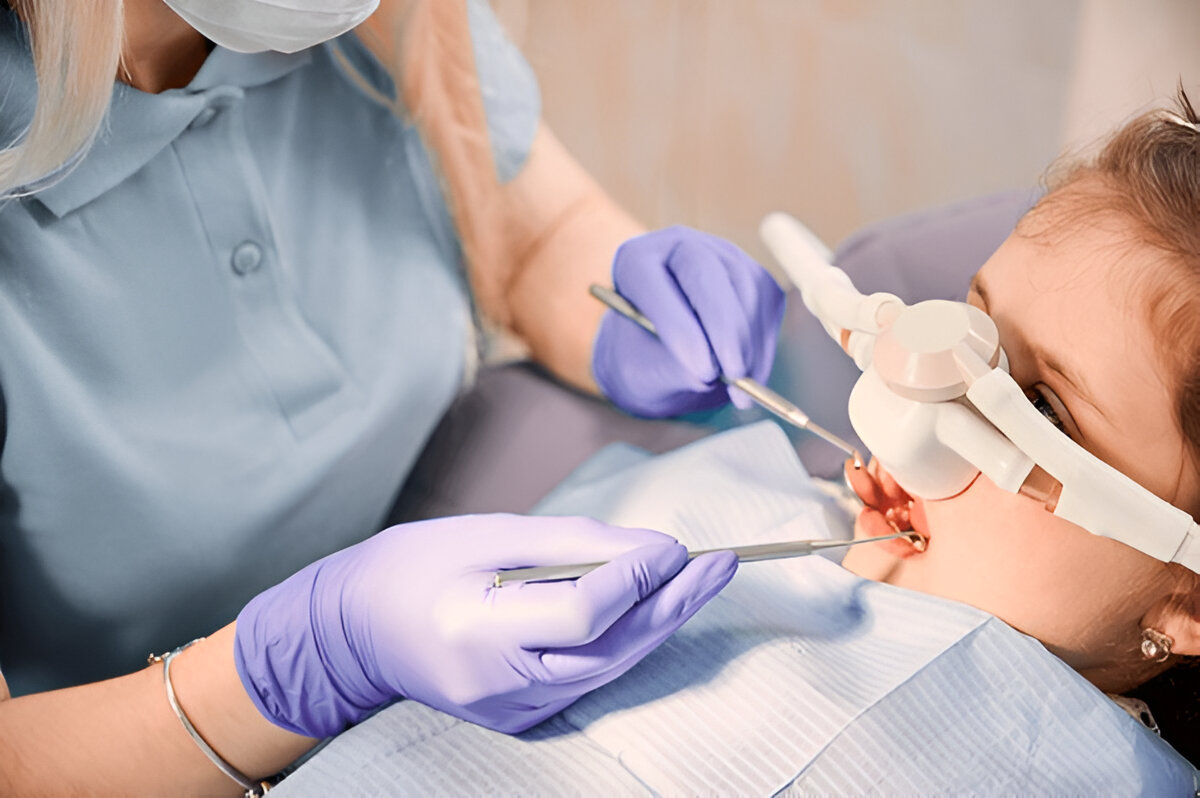Welcome to our comprehensive guide on the transformative benefits of Invisalign treatment for achieving a straighter and more confident smile. Invisalign has revolutionized orthodontic care, offering a discreet, comfortable, and effective alternative to traditional braces. Whether you’re considering Invisalign for the first time or seeking more information about its advantages, this blog is designed to provide you with everything you need to know. From Does Invisalign Whiten teeth and how it works, we’ll explore the key aspects of this innovative treatment and help you make informed decisions about your dental health journey. So, let’s dive in and discover how Invisalign can enhance your smile and boost your self-confidence!
Overview of Invisalign Treatment
Invisalign treatment offers a modern approach to straightening teeth without the need for traditional metal braces. Using a series of clear, custom-made aligners, Invisalign gradually shifts teeth into their desired positions. These aligners are virtually invisible and are custom-fitted to each patient’s mouth, making them comfortable to wear and easy to remove for eating, drinking, brushing, and flossing. The treatment begins with a consultation with a qualified Invisalign provider, who will assess the patient’s dental condition and create a personalized treatment plan. This plan outlines the specific movements of the teeth throughout the treatment process, providing patients with a clear understanding of what to expect.
Understanding Invisalign Treatment
Invisalign treatment is a popular orthodontic option that offers a discreet and convenient way to straighten teeth without traditional braces. Unlike metal braces, which use brackets and wires to apply pressure to the teeth, Invisalign utilizes a series of clear, custom-made aligner trays to gradually shift the teeth into their desired positions. Each set of aligners is worn for about two weeks before being replaced with the next set in the series, gradually moving the teeth closer to their final alignment. This treatment is suitable for addressing a wide range of dental issues, including crowded teeth, gaps between teeth, overbites, underbites, and crossbites.
How Invisalign Works to Straighten Teeth
Invisalign works by applying controlled force to specific areas of the teeth, gradually guiding them into proper alignment over time. The treatment begins with a consultation with an Invisalign provider, who will assess the patient’s dental condition and create a customized treatment plan using advanced computer software. This plan maps out the movements of the teeth throughout the treatment process, determining the precise sequence of aligners needed to achieve the desired results. Each aligner in the series is slightly different from the last, applying gentle pressure to the teeth to encourage them to move into the desired positions. As the patient progresses through the series of aligners, their teeth gradually shift into alignment, resulting in a straighter and more aesthetically pleasing smile.
Aligner Trays and Their Function
The aligner trays used in Invisalign treatment are custom-made to fit snugly over the patient’s teeth, providing a comfortable and discreet orthodontic solution. Made from a clear, smooth plastic material, the aligners are virtually invisible when worn, making them an attractive option for individuals who wish to undergo orthodontic treatment without drawing attention to their smile. Each set of aligners is designed to apply gentle pressure to the teeth, gradually moving them into their desired positions. The aligners are removable, allowing patients to take them out for eating, drinking, brushing, and flossing, providing flexibility and convenience throughout the treatment process. By wearing the aligners for the recommended 20 to 22 hours per day, patients can achieve optimal results and enjoy a straighter, more confident smile.
Invisalign Whiten Teeth
Teeth whitening is a desirable cosmetic enhancement sought by many individuals to achieve a brighter, more radiant smile. Invisalign, known primarily for its orthodontic benefits, also offers the advantage of contributing to teeth whitening during the course of treatment. This dual-purpose functionality makes Invisalign an attractive option for individuals looking to both straighten their teeth and brighten their smiles simultaneously.

Invisalign Aligners Whitening Properties
Invisalign aligners are crafted from a proprietary clear thermoplastic material known as SmartTrack. This material is not only engineered for comfort and flexibility but also possesses unique whitening properties. As patients wear their Invisalign aligners throughout the day, the aligners gently and consistently apply pressure to the teeth, guiding them into proper alignment. Simultaneously, the SmartTrack material in the aligners exerts a subtle whitening effect on the teeth.
The aligners’ snug fit creates a barrier between the teeth and external staining agents, such as pigmented food and beverages, reducing the likelihood of surface staining during treatment. Additionally, the aligners’ transparency minimizes the appearance of existing stains, giving the illusion of whiter teeth as the treatment progresses. While the primary purpose of Invisalign aligners is orthodontic correction, their inherent whitening properties provide a beneficial side effect, contributing to a brighter smile over time.
How Invisalign Treatment Contributes to Teeth Whitening
Invisalign treatment contributes to teeth whitening through several mechanisms. First, as the aligners gradually shift the teeth into alignment, they also help to eliminate minor surface stains by evenly distributing saliva and preventing the accumulation of plaque and debris. This consistent cleansing action helps to maintain the teeth’s natural whiteness throughout the treatment process.
Furthermore, by correcting misalignments and closing gaps between teeth, Invisalign treatment improves overall dental hygiene and facilitates more effective brushing and flossing. Enhanced oral hygiene practices, combined with the protective barrier provided by the aligners, help to prevent new stains from forming and promote a healthier, brighter smile. As a result, many patients experience noticeable improvements in the whiteness and brightness of their teeth during and after completing Invisalign treatment.
Factors Affecting Teeth Whitening
Teeth whitening is influenced by various factors, ranging from individual characteristics to treatment methods and lifestyle habits. Understanding these factors is essential for achieving optimal whitening results and maintaining a bright, healthy smile.
Tooth Structure and Composition
The natural color of teeth varies among individuals due to differences in enamel thickness, dentin shade, and overall tooth structure. Enamel thickness plays a significant role in determining tooth color, as thinner enamel may allow more of the underlying dentin color to show through, resulting in a darker appearance. The composition of dentin, which lies beneath the enamel, can influence tooth color. Dentin naturally ranges in shades from yellow to gray, contributing to the overall color of the teeth.
Staining Agents and Habits
Extrinsic stains, caused by external factors such as food, beverages, and tobacco use, can significantly impact tooth color. Common staining agents include coffee, tea, red wine, and tobacco products. Regular consumption of these substances can lead to the gradual accumulation of stains on the tooth surface, resulting in discoloration over time. Certain habits, such as poor oral hygiene practices and neglecting regular dental cleanings, can exacerbate staining and contribute to dull or yellowed teeth.
Age and Wear
As individuals age, the enamel on their teeth may naturally wear down, exposing more of the underlying dentin and leading to a darker appearance. Additionally, years of exposure to acidic foods and beverages, as well as abrasive toothpaste or brushing techniques, can contribute to enamel erosion and discoloration. Other factors such as dental trauma, injury, or previous dental procedures may also affect tooth color and appearance.
Existing Dental Work
Teeth whitening treatments may produce varied results depending on the presence of existing dental restorations, such as fillings, crowns, or veneers. Unlike natural tooth enamel, these restorative materials do not respond to bleaching agents in the same way and may remain unchanged or become discolored during whitening treatment. As a result, individuals with visible dental work may require additional considerations and alternative whitening options to achieve uniform results across all teeth.

Expectations and Results
Teeth whitening is a popular cosmetic dental procedure that can enhance the appearance of your smile by brightening the shade of your teeth. However, it’s essential to have realistic expectations about the process and the results it can achieve.
Expectations regarding teeth whitening
Before undergoing a teeth whitening treatment, it’s crucial to understand what the procedure entails and what you can expect in terms of outcomes. Teeth whitening treatments aim to remove stains and discoloration from the surface of your teeth, resulting in a brighter, whiter smile. However, it’s essential to recognize that the effectiveness of teeth whitening can vary depending on several factors, including the severity of staining, the type of whitening treatment used, and individual characteristics such as tooth structure and enamel thickness.
While teeth whitening treatments can significantly improve the appearance of your smile, they may not be able to achieve a perfectly uniform shade or eliminate all types of stains. Some stains, such as those caused by certain medications or dental trauma, may be more challenging to remove with traditional whitening methods. The natural color of your teeth and the presence of any dental restorations, such as fillings or crowns, can also impact the results of teeth whitening.
Realistic outcomes and potential benefits
When considering teeth whitening, it’s essential to have realistic expectations about the potential outcomes of the treatment. While teeth whitening can effectively remove surface stains and lighten the overall shade of your teeth, it may not dramatically change the color of severely discolored teeth or address underlying issues such as enamel erosion or dental decay.
However, despite these limitations, teeth whitening can still provide significant benefits and improve the appearance of your smile. Many individuals experience a noticeable difference in the brightness and whiteness of their teeth after undergoing a whitening treatment, leading to increased confidence and self-esteem. A whiter smile can create a more youthful and vibrant appearance, enhancing your overall facial aesthetics.
Conclusion
Teeth whitening is a popular and effective cosmetic dental procedure that can significantly enhance the appearance of your smile. By removing stains and discoloration from the surface of your teeth, whitening treatments can provide noticeable improvements in the brightness and whiteness of your smile, boosting your confidence and self-esteem. However, it’s essential to have realistic expectations about the outcomes of teeth whitening and understand that individual results may vary depending on factors such as the severity of staining and the type of whitening treatment used. Additionally, maintaining good oral hygiene habits and avoiding staining foods and beverages can help prolong the results of teeth whitening and keep your smile looking bright and radiant.
FAQs
Is teeth whitening safe?
Yes, teeth whitening is considered a safe and non-invasive cosmetic dental procedure when performed by a qualified dental professional. However, it’s essential to follow your dentist’s instructions and avoid overusing whitening products to prevent potential side effects such as tooth sensitivity or gum irritation.
How long do the results of teeth whitening last?
The longevity of teeth whitening results can vary depending on factors such as your oral hygiene habits, diet, and lifestyle choices. On average, the effects of teeth whitening can last anywhere from six months to two years. Regular touch-up treatments or at-home maintenance products can help prolong the results.
Can anyone undergo teeth whitening?
While teeth whitening is generally safe for most individuals, it may not be suitable for everyone. Pregnant or nursing women, individuals with untreated dental problems such as tooth decay or gum disease, and those with hypersensitivity to whitening agents may not be candidates for teeth whitening.












